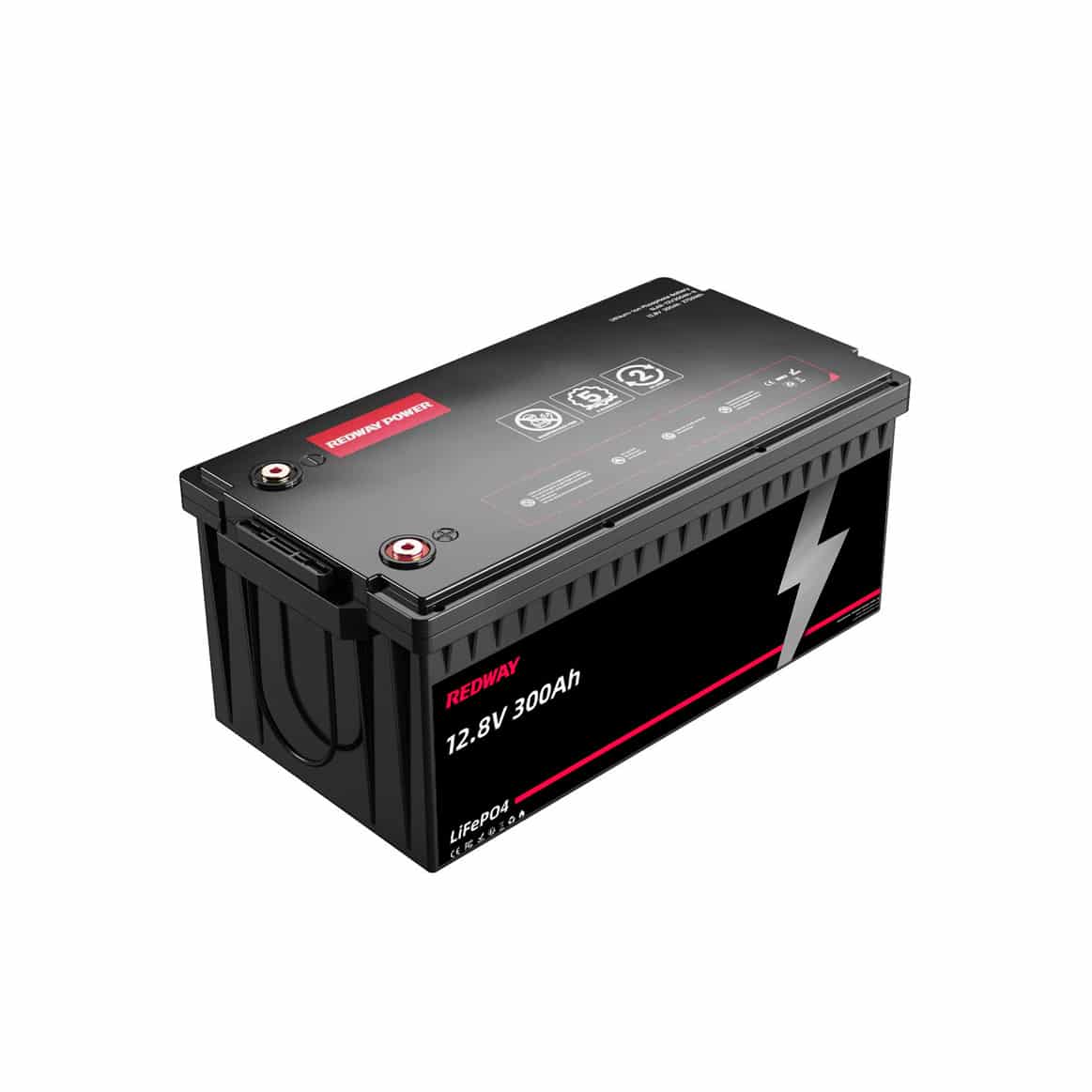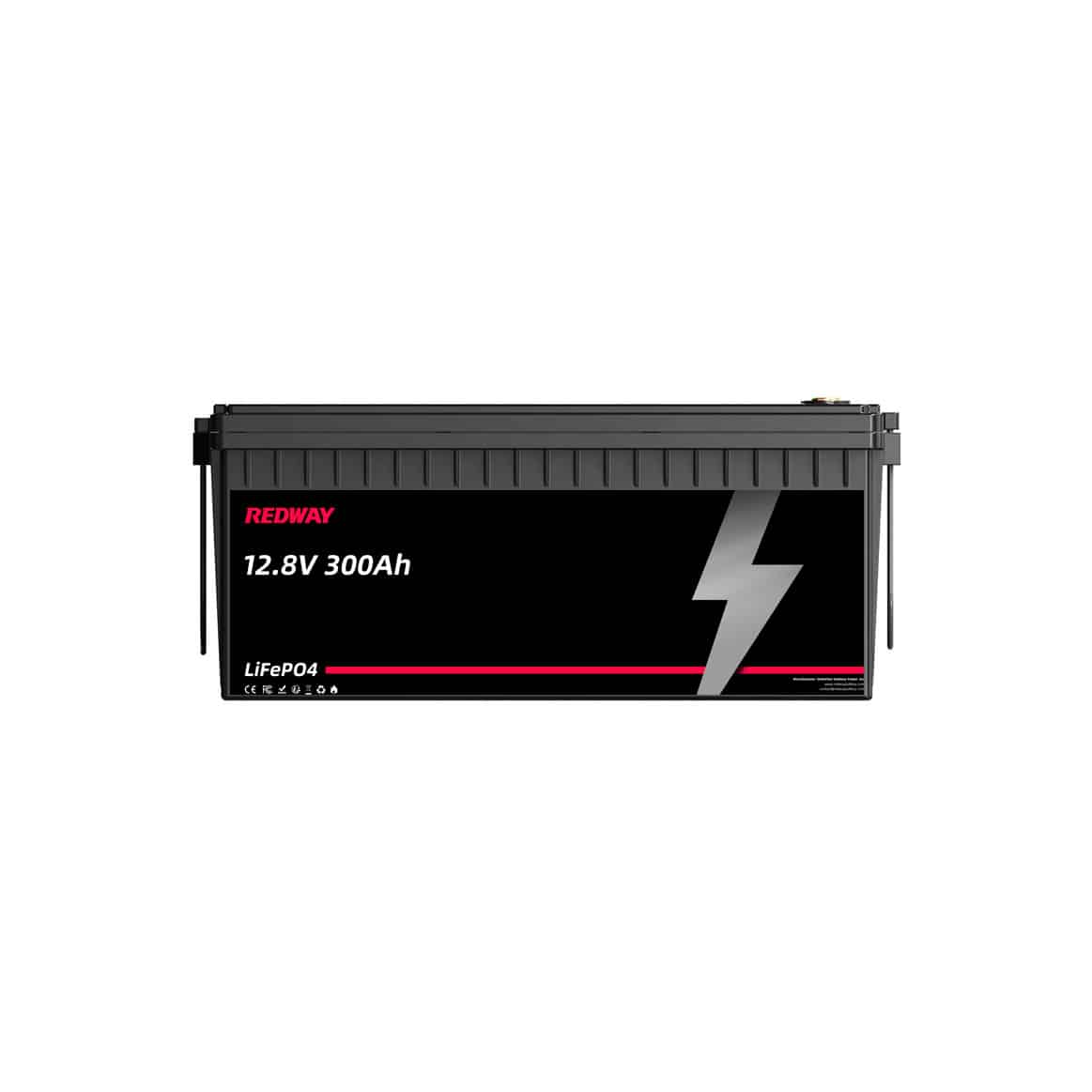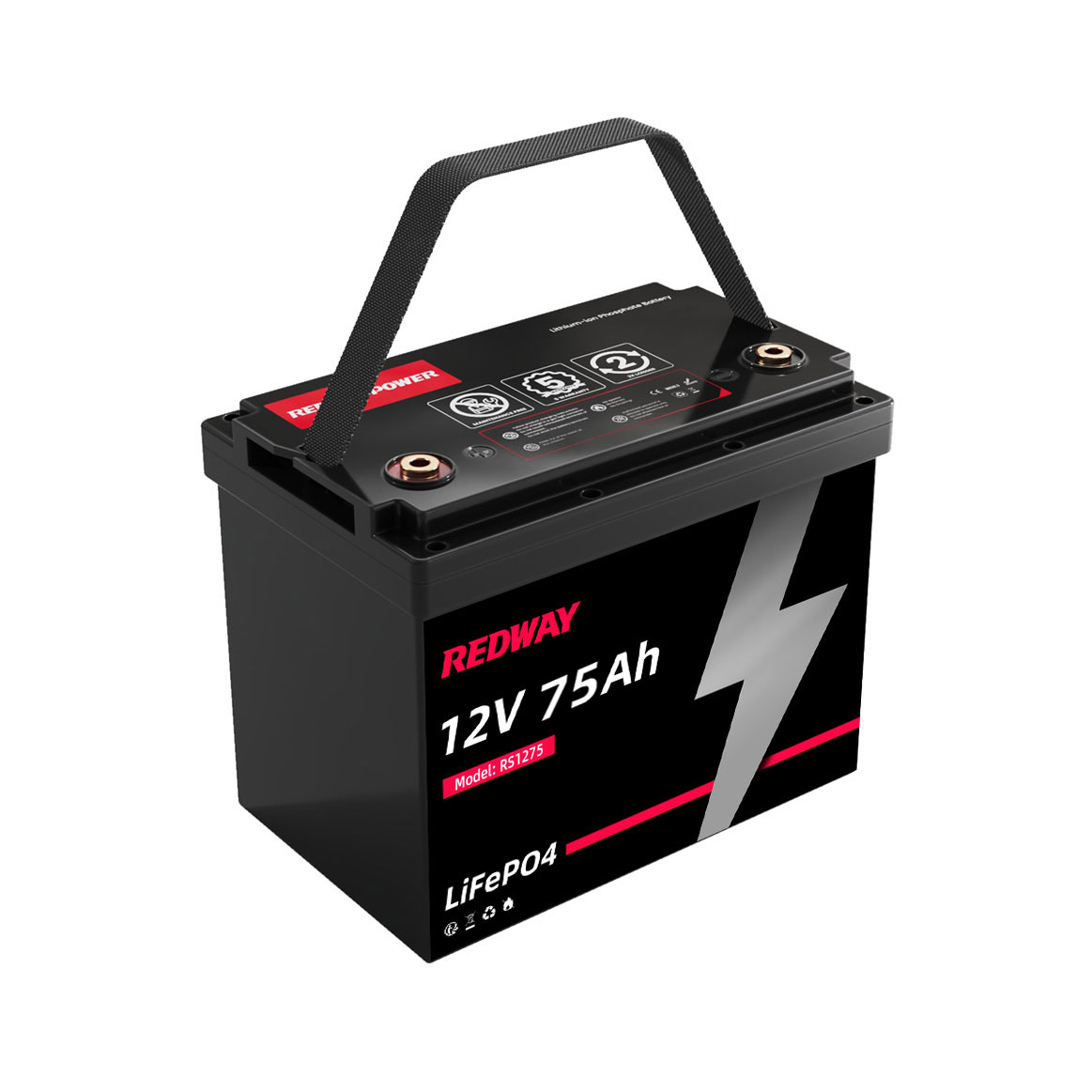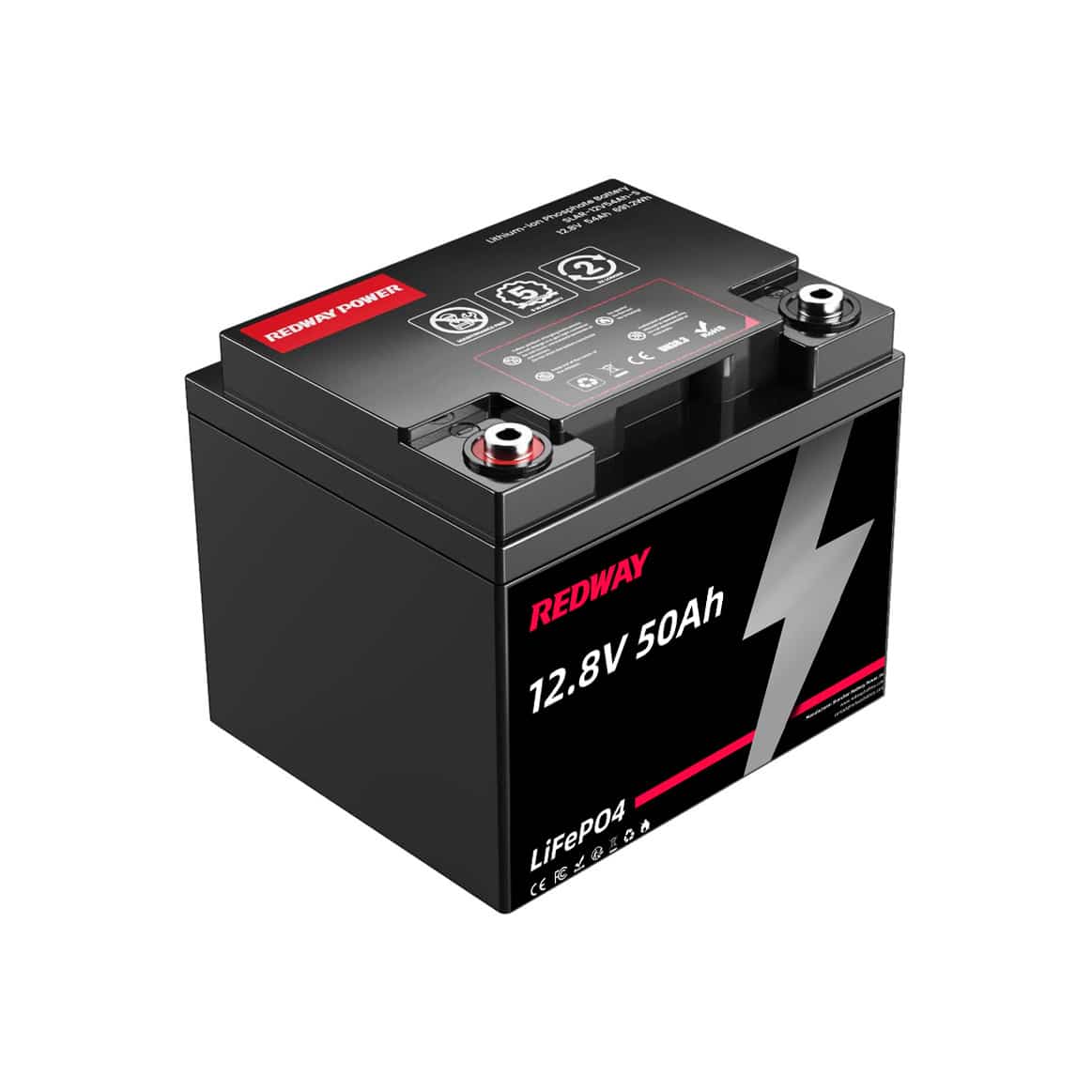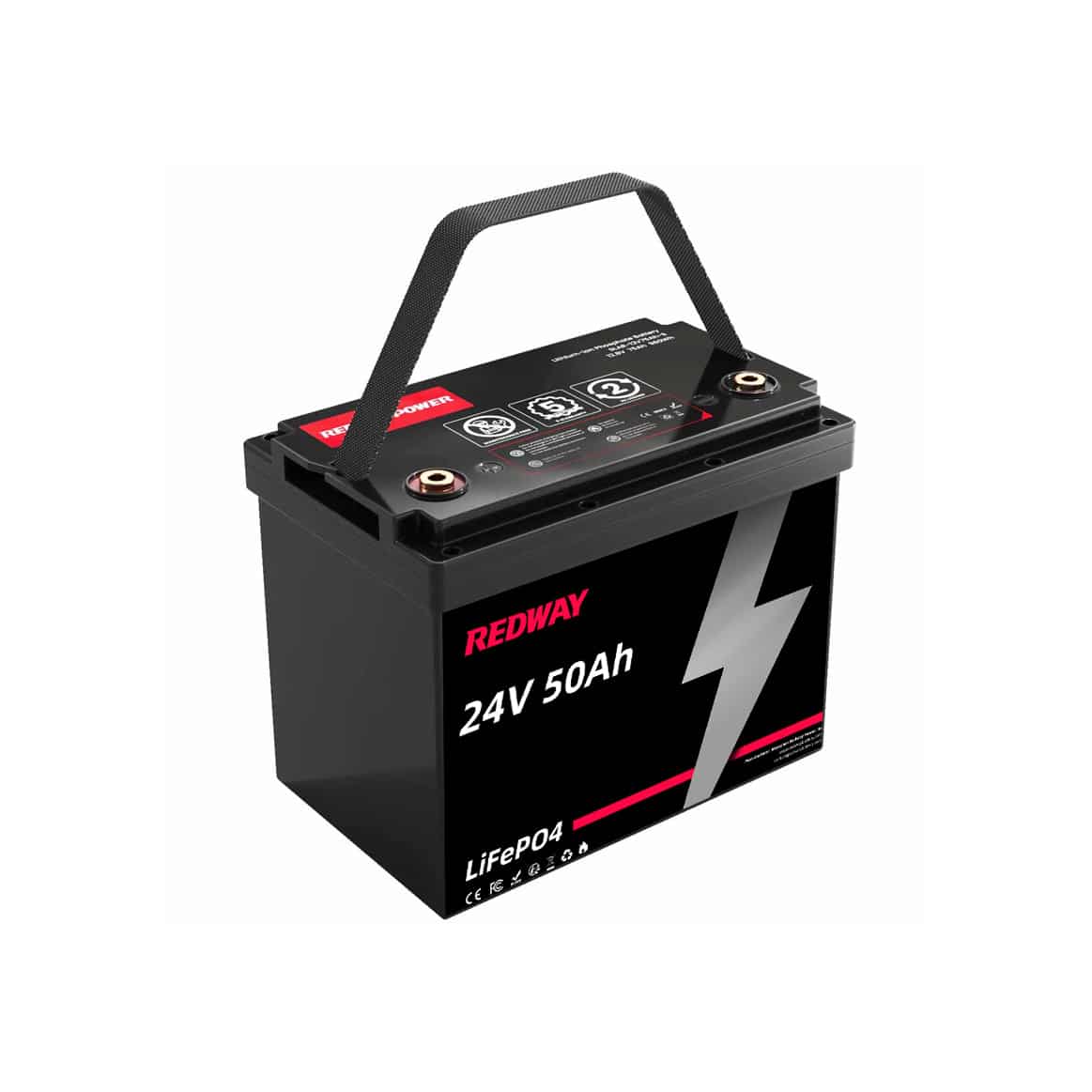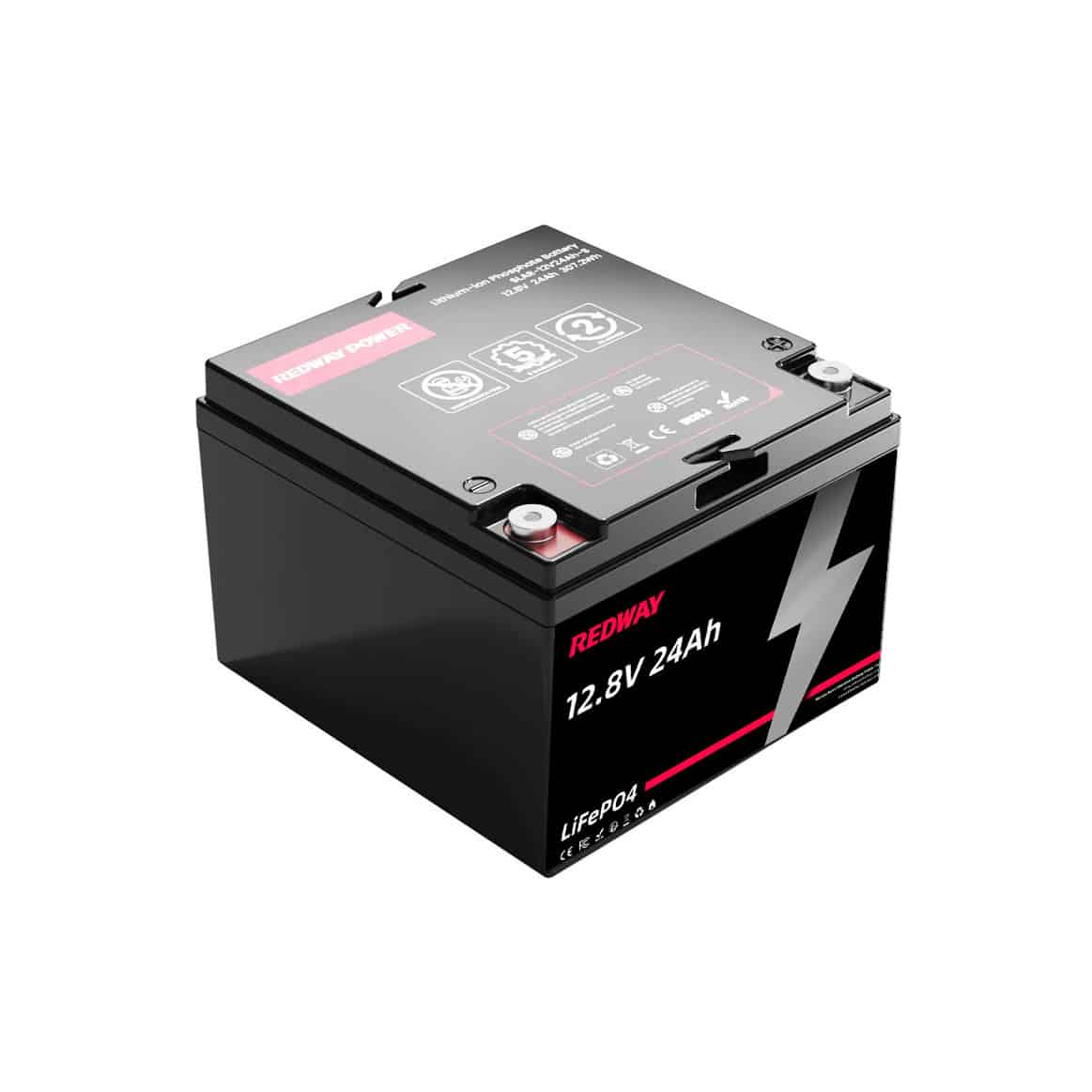Description
The Redway Power 12V 300Ah LiFePO4 battery is a powerful and reliable energy storage solution designed to meet the demands of solar power systems, electric vehicles, and backup power applications. With a large capacity of 300Ah and an energy output of 3840Wh, it delivers long-lasting and consistent power for high-demand uses.
Built with advanced LiFePO4 (Lithium Iron Phosphate) cells, this battery features an extended cycle life of over 5000 cycles at 80% depth of discharge, ensuring durability and excellent long-term value. It supports a high continuous charge and discharge current of 200A, making it ideal for applications requiring rapid energy delivery.
Compact and lightweight at only 26 kg (57 lbs) with dimensions of 523 x 269 x 218 mm, the battery is easy to install and handle. Its IP65 rating provides protection against dust and water, enhancing reliability in various environments. The battery includes a high-quality JBD/DALY BMS for comprehensive protection against overvoltage, undervoltage, overcurrent, and temperature extremes.
Optional smart upgrades like Bluetooth, GPS, self-heating, and LCD displays allow for enhanced monitoring and control. Certified to UL1642, IEC62619, CE, and UN38.3 standards, this battery offers a 10-year design life and a 3-year warranty, making it a safe, efficient, and cost-effective choice for your energy needs.
Know More
The 12V 300Ah LiFePO4 Lithium Battery (BCI Group 8D) delivers 3.84kWh of energy, over 4,000–6,000 cycles, and advanced BMS safety in a robust, lightweight form. Redway Battery’s OEM/ODM expertise, rapid delivery, and BCI-standard compatibility make it the premier choice for RV, marine, off-grid, and industrial energy storage at wholesale scale.
What Are the Key Features and Specifications of the 12V 300Ah LiFePO4 Battery (Group 8D)?
The 12V 300Ah LiFePO4 battery (Group 8D) features a nominal voltage of 12.8V, 300Ah capacity, and 3,840Wh energy output. It weighs just 25kg, supports 200A continuous charge/discharge, and operates from -20°C to 65°C. The ABS shell and advanced BMS ensure safety, while the self-discharge rate is only 3% per month.
Chart: Key Specifications of 12V 300Ah LiFePO4 (8D)
| Feature |
Value |
| Nominal Voltage |
12.8V |
| Capacity |
300Ah |
| Energy |
3,840Wh |
| Cycle Life |
4,000–6,000+ cycles |
| Operating Temp |
-20°C to 65°C |
| Weight |
25kg |
| Max Charge/Discharge |
200A |
| Case |
ABS Plastic |
| Certifications |
CE, IEC, UN38.3, MSDS, UL |
How Does the 12V 300Ah LiFePO4 Battery Ensure Safety and Reliability?
This battery is equipped with a smart BMS that provides real-time monitoring and protection against overcharge, overdischarge, overcurrent, short circuits, and overheating. The robust ABS casing is fire-resistant, and the battery is engineered for safe operation under extreme temperatures and demanding conditions.
Which Applications Are Best Suited for the 12V 300Ah LiFePO4 Battery (Group 8D)?
The 12V 300Ah LiFePO4 battery excels in RVs, marine vessels, off-grid solar systems, industrial backup, and commercial vehicles. Its deep-cycle capability, high discharge current, and maintenance-free design make it ideal for both mobile and stationary power applications.
Why Is LiFePO4 Chemistry Preferred for BCI Group 8D Batteries?
LiFePO4 chemistry offers superior thermal stability, long cycle life, and high safety compared to lead-acid and other lithium-ion types. It resists thermal runaway, supports deep cycling, and maintains over 80% capacity after thousands of cycles, making it the top choice for demanding and mission-critical applications.
How Does Redway Battery Support OEM, ODM, and Wholesale Needs?
Redway Battery provides full OEM/ODM services, allowing customization of voltage, capacity, case design, and branding. With advanced manufacturing in Dongguan, China, Redway delivers flexible solutions, fast lead times (20 days), and global logistics for wholesale and B2B clients.
What Certifications and Standards Does the 12V 300Ah LiFePO4 Battery Meet?
The battery is certified to CE, IEC62619, UN38.3, MSDS, and UL standards, ensuring compliance with global safety, transport, and environmental requirements. These certifications guarantee reliability, safe installation, and acceptance in international markets.
How Does the 12V 300Ah LiFePO4 Battery Compare to Lead-Acid and Other Lithium Batteries?
Compared to lead-acid, the 12V 300Ah LiFePO4 battery is 70% lighter, lasts 5–10 times longer, and delivers higher energy density. It is maintenance-free, supports fast charging, and offers a much lower total cost of ownership.
Chart: LiFePO4 (8D) vs. Lead-Acid Battery Comparison
| Feature |
LiFePO4 (8D) |
Lead-Acid (8D) |
| Cycle Life |
4,000–6,000+ cycles |
400–800 cycles |
| Weight |
25kg |
70kg+ |
| Maintenance |
None |
Regular |
| Depth of Discharge |
80% |
50% |
| Energy Density |
High |
Low |
Can the 12V 300Ah LiFePO4 Battery Be Used in Series or Parallel for Larger Systems?
Yes, up to four batteries can be connected in series for 48V systems or in parallel for higher capacity. This modularity supports scalable energy storage for solar, backup, and mobile applications, enabling configurations up to 61.44kWh.
What Makes BCI Group 8D Batteries the Standard for High-Demand Applications?
BCI Group 8D batteries follow strict standards for size, terminal placement, and performance, ensuring compatibility and reliability in automotive, marine, and industrial sectors. Redway’s LiFePO4 8D batteries meet or exceed these standards for seamless integration.
How Do You Evaluate a Reliable 12V 300Ah Battery Supplier?
Look for certifications, production capacity, customer reviews, and warranty policies. Redway Battery stands out with international certifications, strict quality control, a 10-year warranty, and a history of positive feedback from global clients.
Redway Battery Expert Views
“Our 12V 300Ah LiFePO4 Group 8D battery is engineered for maximum performance, safety, and versatility. With advanced BMS, robust construction, and full OEM/ODM support, Redway Battery delivers reliable solutions for RV, marine, and off-grid energy storage worldwide.”
— Dr. Mei Zhang, Senior Engineer, Redway Battery
Conclusion
The 12V 300Ah LiFePO4 Lithium Battery (BCI Group 8D) stands out for its safety, long cycle life, and modular design. Redway Battery’s OEM expertise, global certifications, and BCI-standard compatibility make it the premier choice for wholesale, custom, and industrial energy storage needs.
FAQs
Q: What is the cycle life of the 12V 300Ah LiFePO4 battery?
A: Over 4,000–6,000 cycles at 80% DoD, with a 10-year design life.
Q: Can the battery be customized for specific projects?
A: Yes, Redway Battery offers OEM/ODM services for capacity, case, and branding.
Q: Is the 12V 300Ah battery compatible with solar and marine systems?
A: Yes, it integrates seamlessly with solar, marine, RV, and off-grid setups.
Q: What safety features are included?
A: Advanced BMS, ABS casing, fire-resistant materials, and full short-circuit protection.
Q: How quickly can orders be delivered?
A: Standard delivery is 20 days for bulk orders, with global shipping options.


